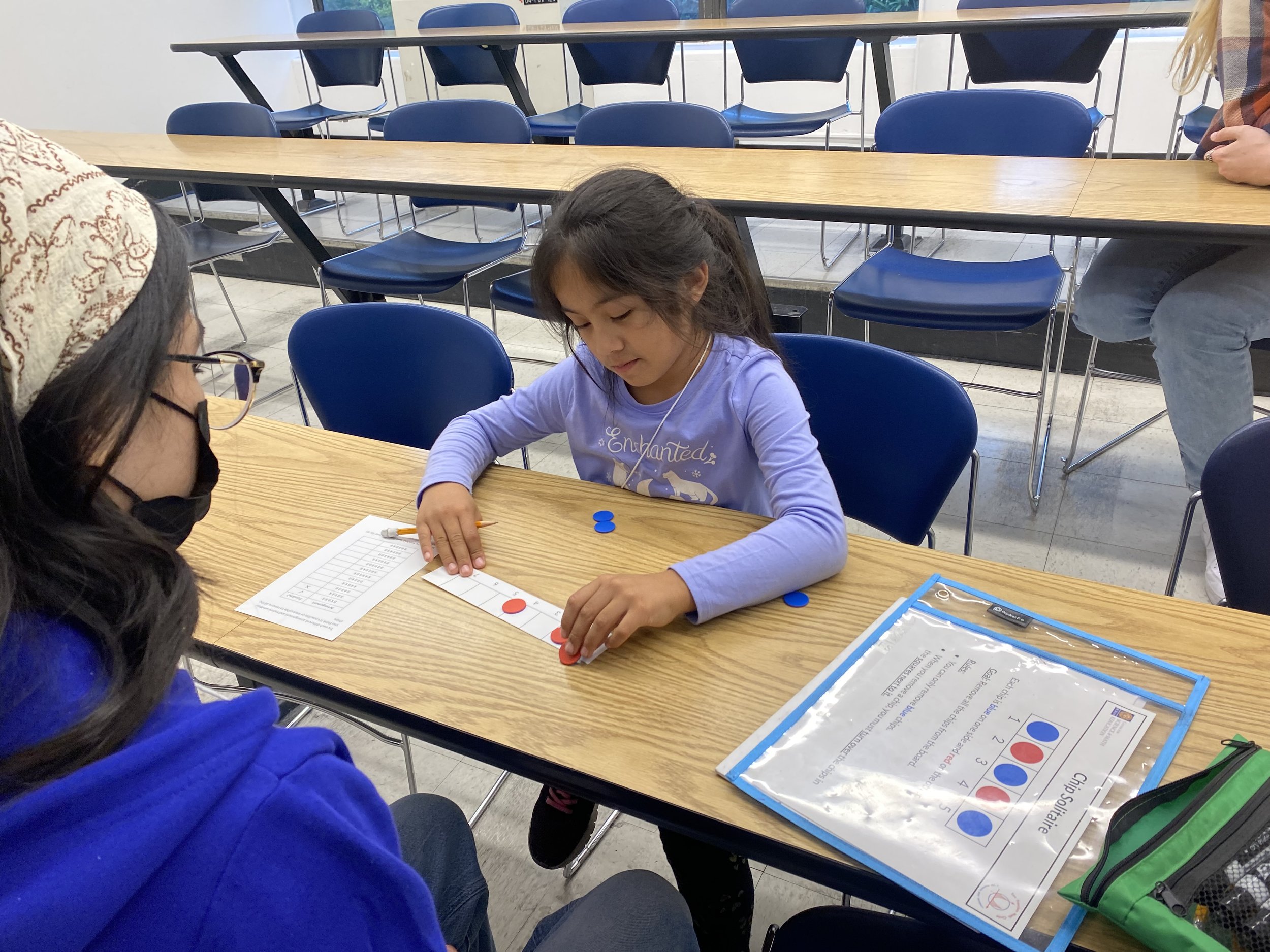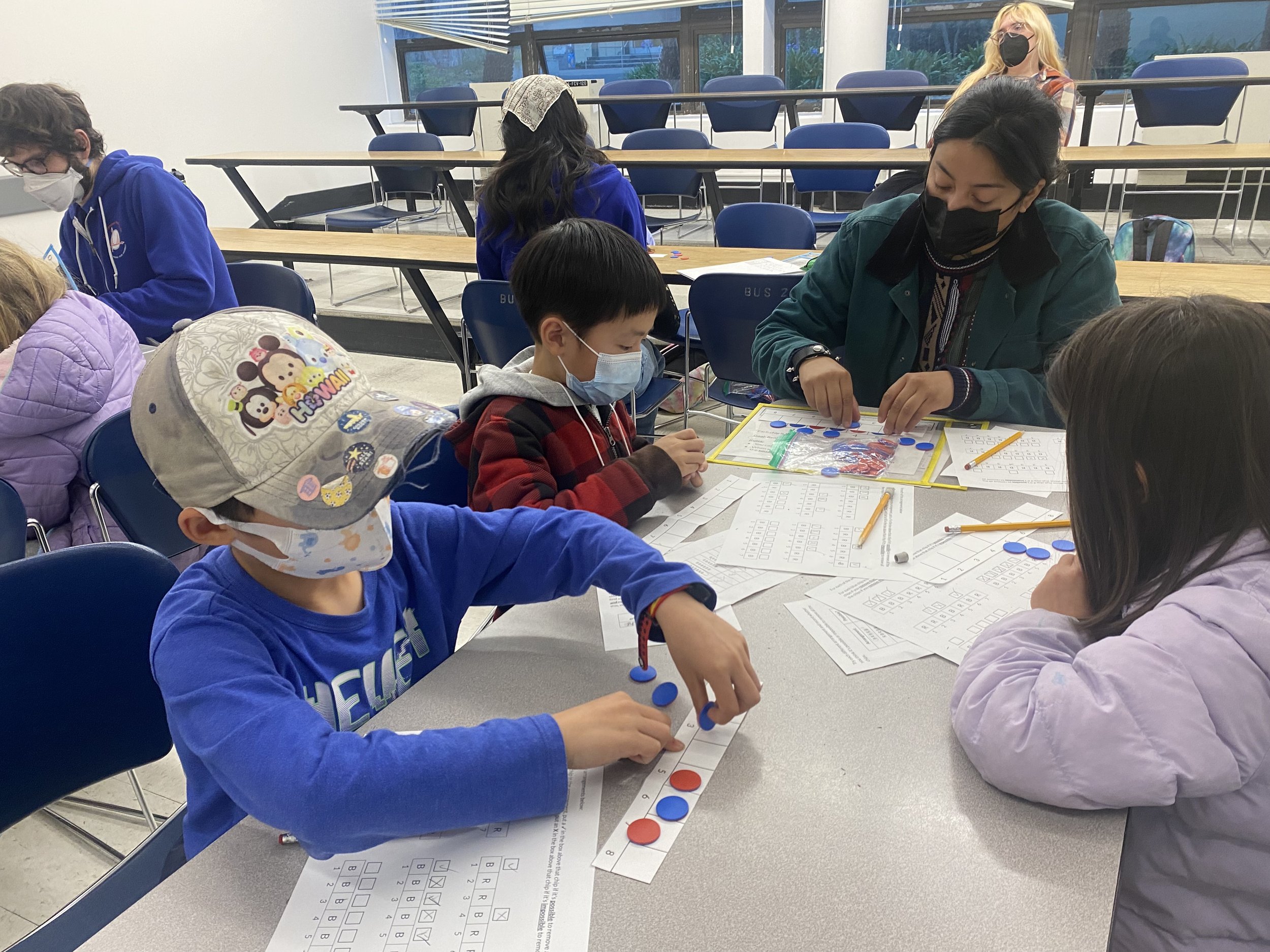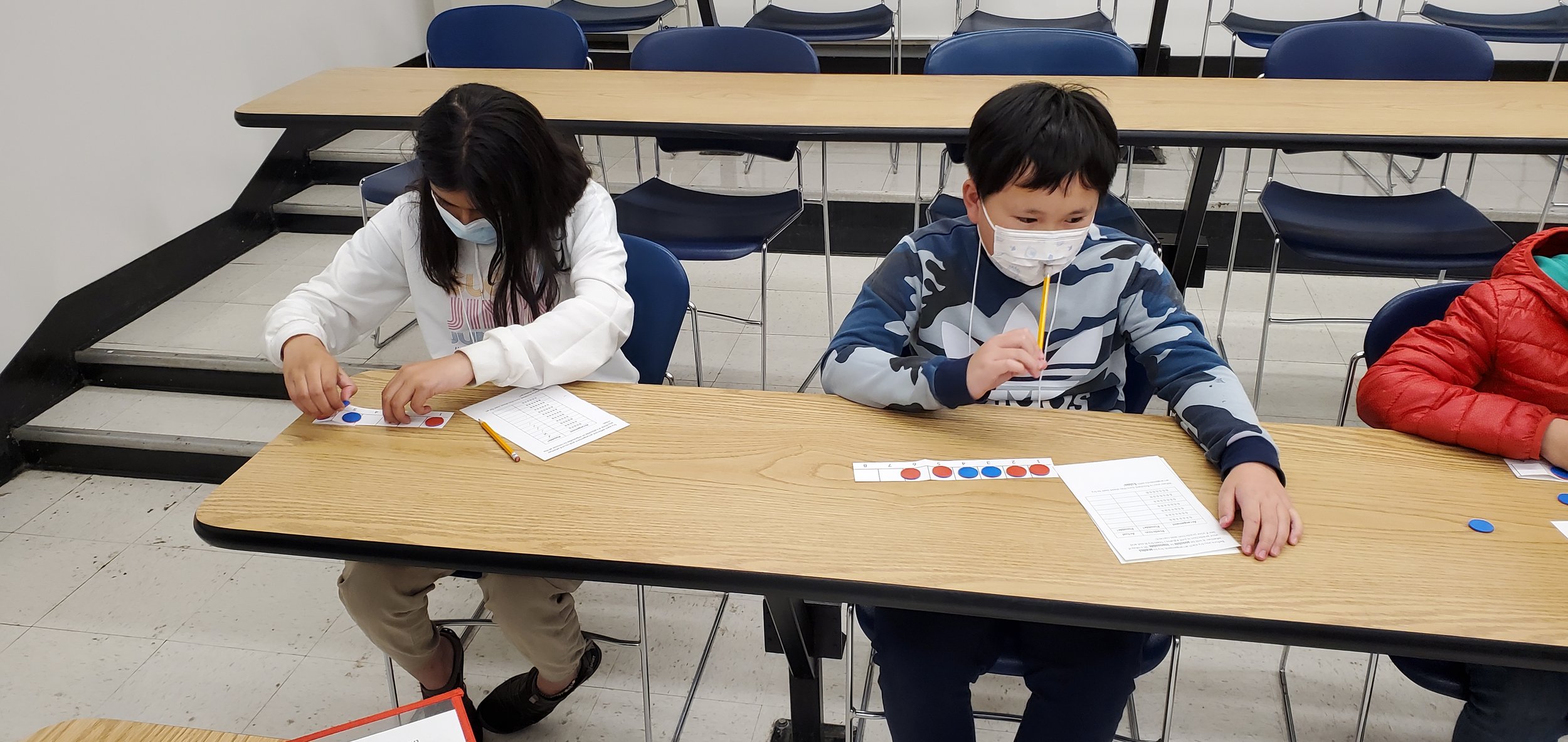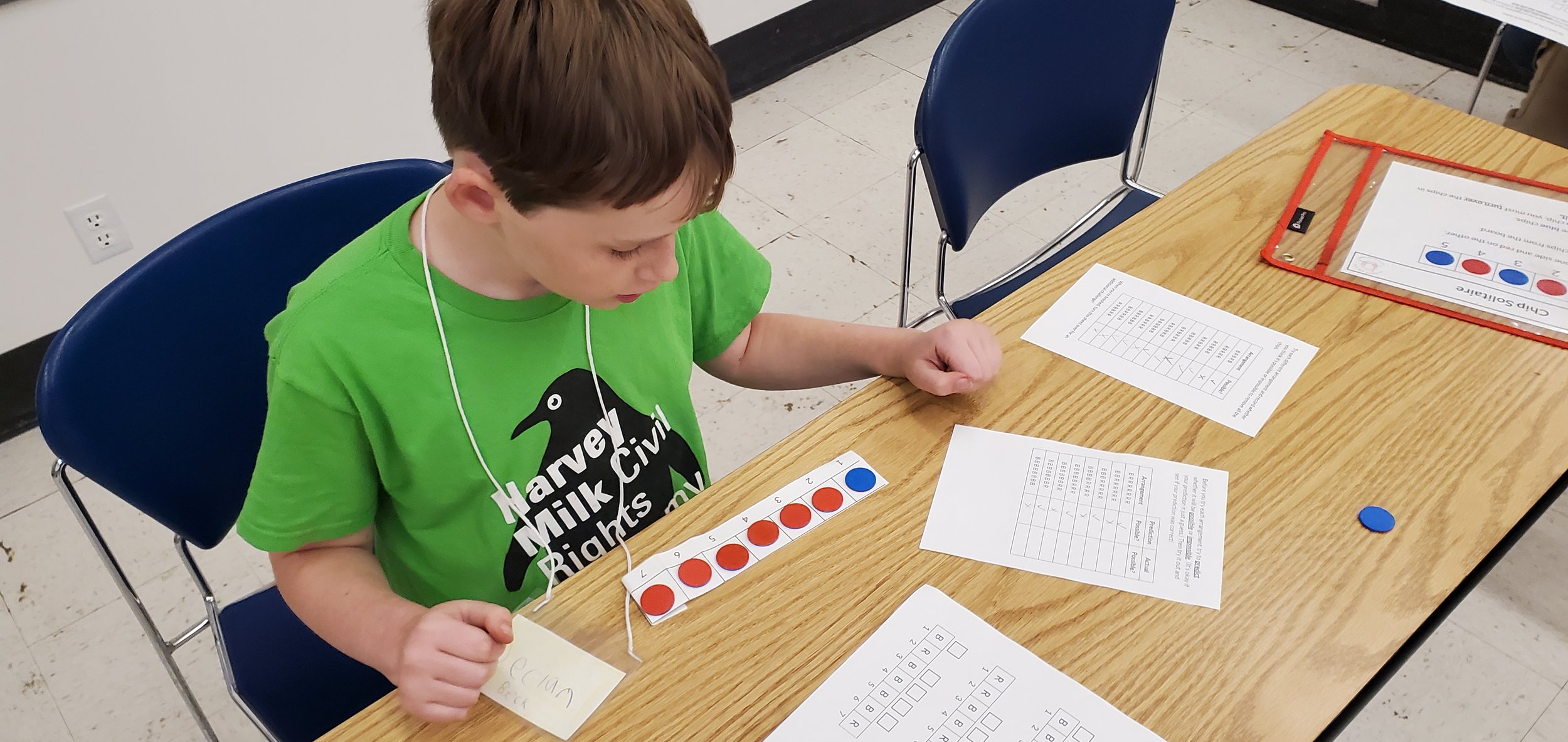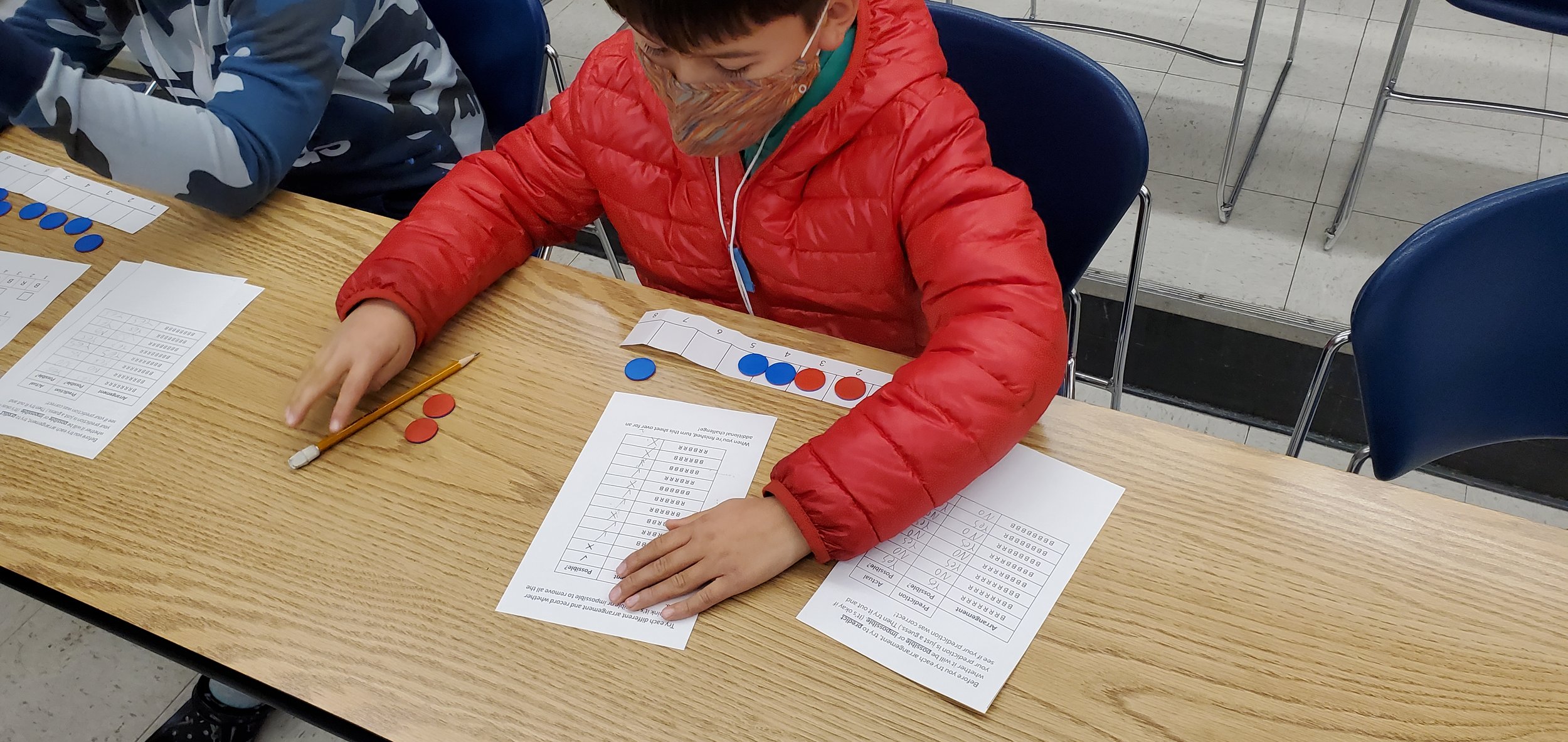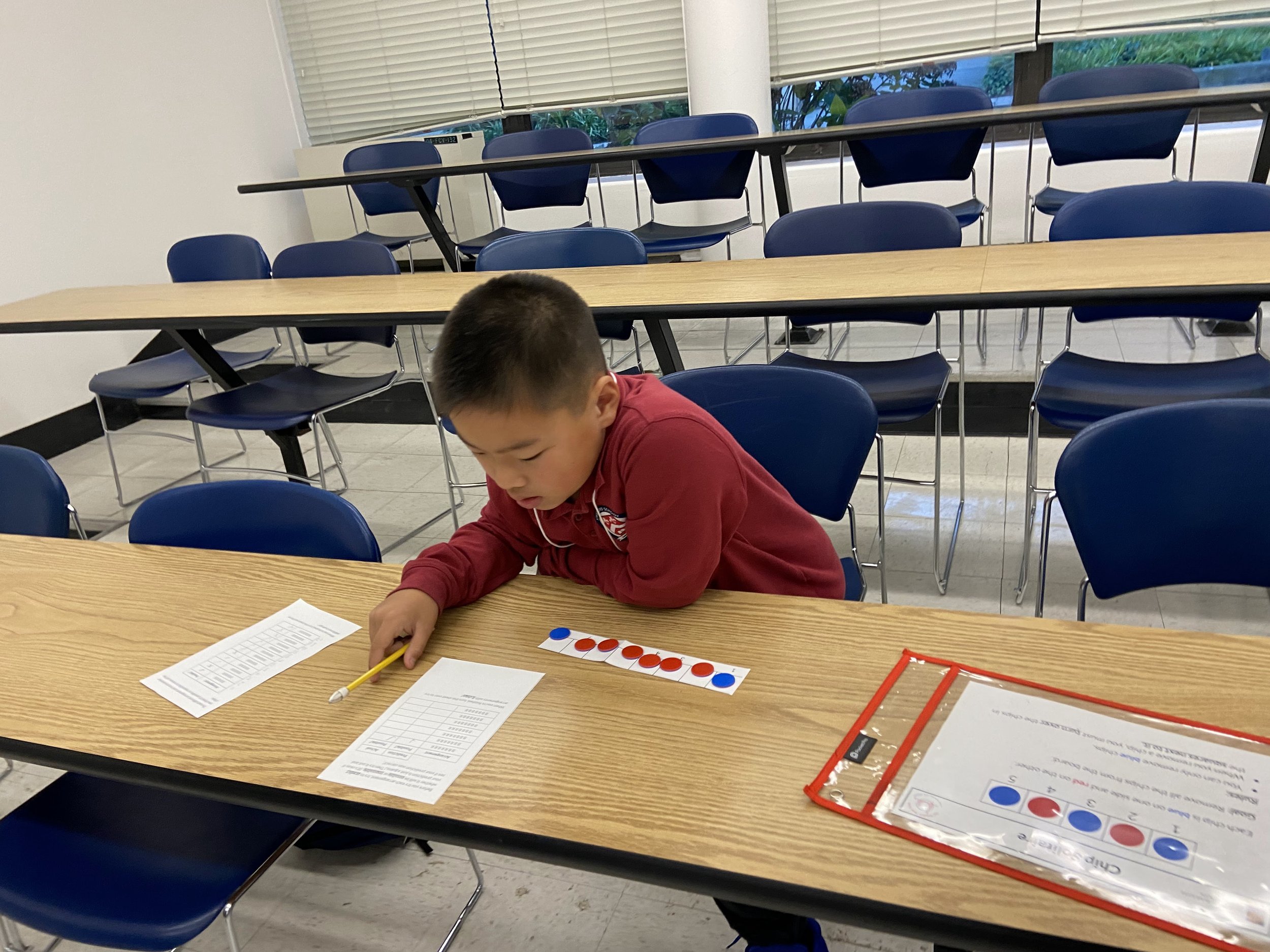Chip Solitaire
How it works
Here's how to play Chip Solitiare:
- You start with some blue and red chips arranged on a game board. The game board has N squares in a row, and each square has a blue or red chip in it. (You can play with different values of N and with different arrangements of blue and red chips.)
- The goal is to remove all the chips.
When removing chips, there are a couple of rules you have to follow:
You can only remove blue chips from the board.
Whenever you remove a chip, you must turn over the chips in the squares next to it.
Can you remove all the chips if you start with the arrangement BRBRB? What if you start with the arrangement RBRBR? Given an arrangement, can you predict whether or not it will be possible to remove all the chips?
In this activity, students explore different arrangements of chips. They discover that there are some arrangements where it's possible to remove all the chips and some where it's impossible. Then they attempt to find patterns that they can use to predict whether or not it will be possible to remove all the chips for a given arrangement. They also explore what happens when they're forced to start by removing a specific chip (rather than being free to choose which chip to remove first).
5 and 6 Chip Arrangements handout
7 and 8 Chip Arrangements handout
Why we like this activity
- It’s fun! Students enjoy trying to remove all the chips and trying to predict whether or not it will be possible.
- It helps students develop algorithmic reasoning.
- It helps students develop numerical reasoning.
It requires students to engage in mathematical habits of mind:
Finding and using strategies when trying to remove all the chips for different arrangements.
Using logic, looking for patterns, making and testing predictions, and understanding and explaining when trying to predict whether or not it will be possible to remove all the chips for different arrangements.
- It has a low floor and a high ceiling: Students can start playing this game by trial and error, but solving bigger and more complex arrangements requires more careful strategy. And there are interesting patterns to find (and to try to understand) when trying to predict whether or not it will be possible to remove all the chips for different arrangements.



